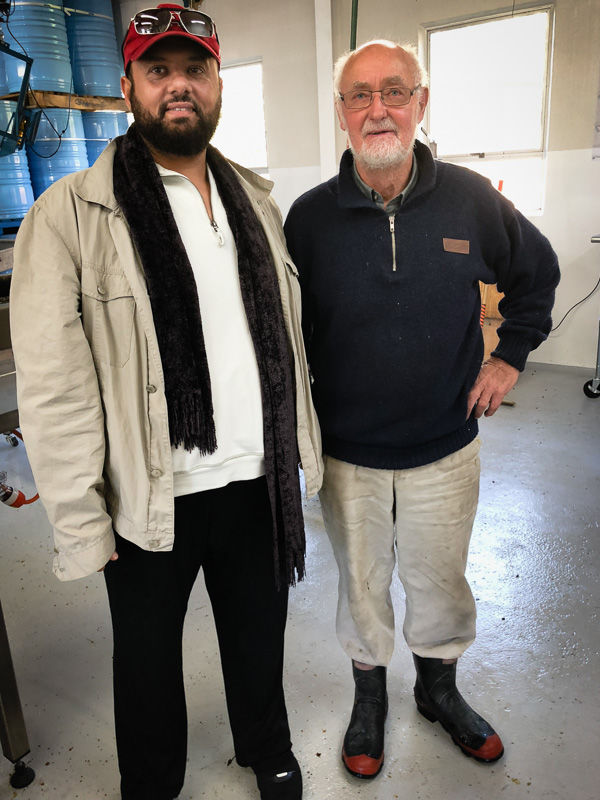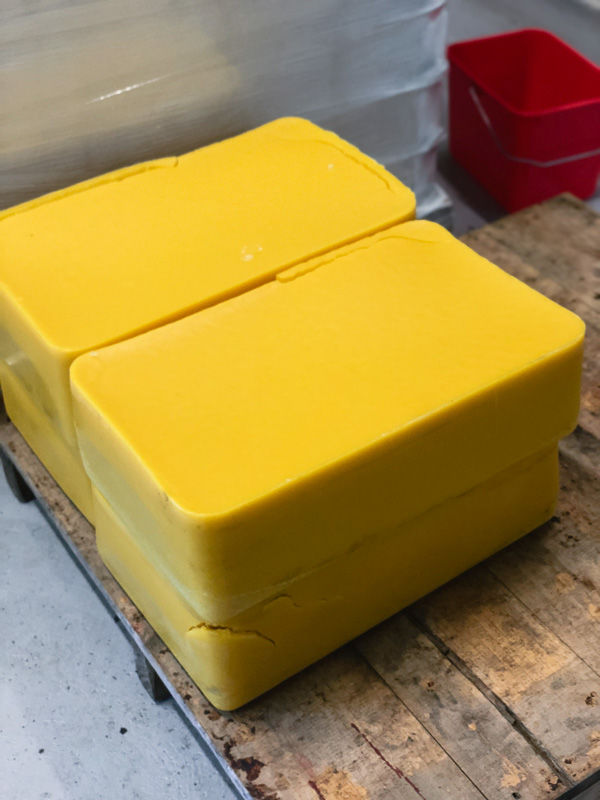Tucked away in Stavely, near Ashburton is the original home to Syme Apiaries where I met John Syme, a beekeeper and engineer, who showed me around his honey house and introduced me to his invention.
John prides himself on having invented the ‘Rolls Royce’ of raw honey extractors, as he calls it, and maintains it’s the only one of its kind in the world. This is saying something as he invented it nearly fifty years ago.
Three generations of beekeepers
John has been beekeeping for 77 years, basically all his life, and is the third generation of Symes to keep bees. His father and grandfather before him were beekeepers farming the bush land 1,400 ft. above sea level. John learned a lot from his Dad and in 1968 was inspired to invent a honey extractor which separates the raw honey from the beeswax and extracts the raw honey too. It took John three years to develop and he admitted to testing early prototypes in ‘my wife’s washing machine’. He went onto patent the rights to his invention. The power of this machine produces 10 tons of raw honey per day, that’s a lot of honey!
Why wax and raw honey are separated
Beeswax is secreted by bees to make the honeycomb that holds and protects the honey in trays inside the hive. The wax is mixed with propolis and pollen giving it a yellow colour. In order for the bees to secrete the wax, the hive needs to be at a temperature of 33 °C to 36 °C. To retain the nutritional value and healing properties of raw honey it mustn’t be heated above the temperature that is naturally in the hive.
Beeswax is edible but there is very little nutritional value and it doesn’t taste great. Its purpose is to protect the honey; a book entitled Beeswax Production, Harvesting, Processing and Products suggests 1 kg of beeswax is used to store 22 kg honey. From early times, man realised that natural beeswax has many practical uses and beeswax candles were a crucial source of light for centuries. The wax needs to be separated so we can enjoy the purity of the prize (raw honey) and beekeepers have adopted a variety of techniques to do this.
John’s invention enables production of honey on a large scale without compromising on quality and raw honey’s special qualities.
- Riath Hamed of Balqees and John Syme
- Beeswax extracted from the honeycomb
How John Syme’s honey extraction invention works
John brings the frames, complete with honeycomb, in from the hives and they are placed in the machine which is like a large drum. This drum can take up to 100 frames. For an idea of scale you can compare this with the 32 frame capacity machine used by Peter from A1 Honey in my post about Backyard Beekeeping in the Western Cape
John’s frames are packed tightly together in the drum and then, with a 5 step build-up of speed, the frames are spun for 3 minutes until the machine stops automatically. That’s as long as it takes. The frames are removed and the raw honey and wax from the cappings (the thin layer of wax used to cover the honey pods or cells) is pumped back into the machine to separate. A few minutes later the raw honey spins out to the sides of the drum allowing the lovely pure, raw honey to pour out into a vat ready for the jar.
As a raw honey buyer I need to know that suppliers who produce large volumes of raw honey are using efficient methods without compromising on quality. John and his machines achieve this by:
- Extracting raw honey without heating and so maintain the potency and quality, so it is truly raw.
- No human hand touches the raw honey at any step of the way (for hygiene).
The next generation of beekeepers
This isn’t John’s only invention. He is the first in the world to find a way to use hydraulics to lift hives (with bees intact) onto pallets. This means they are never touched directly by humans and which doesn’t affect the bees. Through beam technology and the press of a button, two men and two trucks can move 1,000 hives a day saving on labour intensive time, effort and cost.
I asked John what he thinks is the biggest challenge to the industry today and he believes it’s the lack of incentive and training for young people. Fair pricing is one way to bring a younger generation into the industry but also offering correct training from experienced beekeepers who have the years behind them to know exactly how processes work. They have experienced the trials and tribulations and can guide, or even fast track the young so they don’t have to make the same mistakes and go through the hardships that the previous generation endured.
When sourcing raw honey for Balqees, I’m looking for producers who bring their beautiful raw honey from the hive to us without tampering. I want to work with people who are dedicated to the health of the bees, the quality of raw honey, and have a true connection to the land. I found that with John.
Four facts about beeswax that might surprise you
- Beeswax is produced via eight glands in the worker bee’s abdomen.
- Beeswax is the main diet of the wax moth larvae.
- Beeswax was used as an old form of dental filling.
- Beeswax is used in moustache wax keeping your ‘bristle baton’ smooth.
Drop me a comment if you want to know more about this invention or anything else about how the beekeepers harvest raw honey from the hive.












